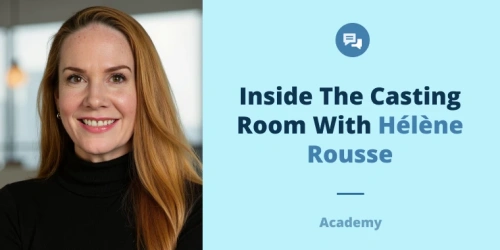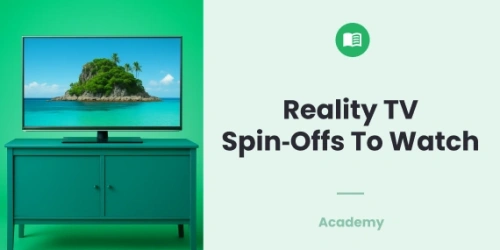- How to Set up a Home Studio?
- What Equipment Do You Need to Record an Audio Demo?
- How to Record Using Audacity?
- The Best Way to Record and Edit Demos for Auditions.
- How Do You Achieve Success in the Voiceover Niche?
Every professional voiceover artist understands the importance of a home studio, why it's necessary, and how to build one from scratch. We will cover all of these for beginners and how to get your audio demo in front of the right people.
With over 40 years of experience, Agent and Coach Lau Lapides, as well as Animation Talent, voiceover artist, and coach Mike Cosh, will be sharing all there is to know about voiceovers and how to achieve success in this entertainment niche.
How to Set up a Home Studio?
Setting up a home studio is an important part of the Voiceover artist's journey. The home studio allows the artist to do professional work from home without going to an outdoor studio. This makes it easy to practice, review, and edit work from the home's convenience, making a home studio a necessity for every voiceover artist. Here are some tips for setting up a home studio:
- The artist should start with what is available: There is no need to get a fully in-built studio within the house that costs 10s of thousands of dollars as a beginner. The artist should start small and make something from what is already available. For example, they can use the table as a stand, use blankets to dissipate sound, etc.
- The first significant investment should be the microphone: Because they are dealing with sound, the artist's first significant spend should be on getting a top-notch microphone that can adequately catch sound for professional recording. This also means the artist should be picky when selecting a microphone. Brands like Rode and Shure are notable for their prowess, yet artists can explore other types that better match their unique voices.
- Reach out to other Voiceover Artists: The artist should connect with other beginners in the industry to find out what works for them in their own home studios. This way, they can pool ideas from others and create a home studio they can be proud of.
What Equipment Do You Need to Record an Audio Demo?
The audio demo is what the voiceover artist submits to potential clients or for an audition, which means it has to be as professional as possible. Here are some equipment necessary for recording an audio demo
- Booth,
- Microphone,
- Stand,
- Padded Walls,
- Editing software.
How to Record Using Audacity?
The software program Audacity is used for editing, mixing, and recording of audio. Audacity has become an industry standard for beginner Voiceover Artists. It is also used by professionals, including Deven Christian Mack, who voiced Sonic The Hedgehog and Sonic Prime.
Simply download the app on your PC and get started.
Nevertheless, if this application doesn't serve the artist's needs, there are other alternatives to Audacity, such as WavePad, LogicPro, MixPad, etc. Although these are paid programs, Audacity is all the artist may ever need except if they want to dive into the engineering aspect of production — This is mostly unnecessary because studios usually have their own engineering team.
The Best Way to Record and Edit Demos for Auditions
Take note of space: The artist should be mindful of the space they set aside for their home studio. This space shouldn't cause echoes or reverberation in the audio. Wherever the artist decides to record, they have to double-check to ensure that the sound is acoustically pleasing to the listener.
Be in the right mindset: The artist must be involved mentally and professionally. This means the artist should not be under any stress and should have had adequate rest before recording.
Handle production and directing: The artist is more or less a solopreneur when working with a client or applying for an audition. This means that the artist is on top of all production and directing responsibilities instead of having a team manage them. Therefore, they must make all the creative decisions alone, leaving room to explore and experiment.
The demo audio should be professional work: Regardless of whether the audio is for paid work or for an audition, the artist should prioritize the work and make sure the delivery is as professional as possible.
Keep the Demo audio short: When editing the demo reel, the artist should not combine different genres together, such as adding animation with commercial audio. Instead, they can create different demo audio for different purposes. The audio should ideally be a minute or 1 minute, 15 seconds max. This does depend on the genre, though; genres such as a narration demo for an audiobook can be extended to up to 145 seconds.
How Do You Achieve Success in the Voiceover Niche?
A successful career as a voiceover artist depends on many factors, including time, commitment, effort, and even financial investment the artist is willing to dedicate to it. First, the artist will need:
- Coaching and Training: The beginner should focus on lots and lots of upskilling because the better they are, the higher the chances of scaling their career in time. To get adequate training, the artist needs to have a coaching team dedicated to helping them improve their talent, such as accent, breathwork, speech, techniques, and so on.
- Talent does not substitute tech: The artist needs to have standard equipment. State-of-the-art equipment might be costly, but getting the proper tools to mirror the artist's talent will complement each other.
- Share audio reels: To improve the chances of getting more gigs even as a beginner, the artist should create audio reels that have passed the sound tests and appropriately showcase the artist's capability and range. Next, the artist should share these reels with the right people. We recommend attaching these audio reels to your profile on the allcasting platform to ensure they are listened to. Here's how to do so:
- Open your profile on the platform.
- Go to the assets tab.
- Scroll down to the audio space where you can upload your audio reel, and there you go! Your audio reel is now in front of the right people.
Setting up a home studio can be a bit of work, but it's definitely worth it for every Voiceover Artist. You can begin with the things you have in your home by creating a makeshift space dedicated to recording audio. From there, you can upgrade little by little up to the point that you have a home studio you can be proud of.





